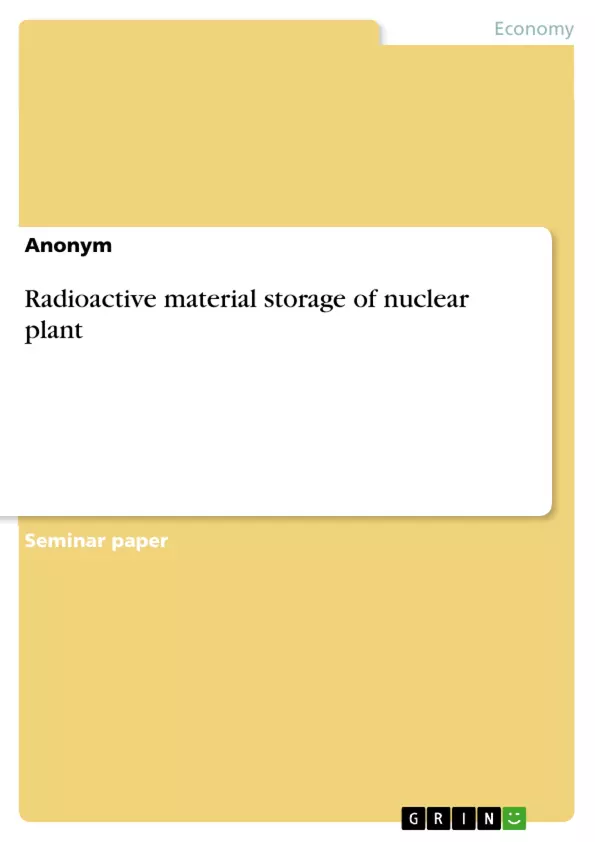Presented detail of storage of hazardous waste used and produced at Slovenia's only nuclear power plant. The first part describes NEK, its history and its social responsibility, which is very important for today. Then comes a section on the operation of the
nuclear power plant, and I have focused the thesis on the division and specifics of NEK's hazardous waste storage. Finally, I have presented the legislation and environmental standards that apply in this area.
Inhaltsverzeichnis (Table of Contents)
- WHAT IS A NUCLEAR POWER PLANT?
- NEK - HISTORY AND DEVELOPMENT.
- NEC BASIC UP-TO-DATE INFORMATION
- CORPORATE SOCIAL RESPONSIBILITY
- STORAGE OF RADIOACTIVE MATERIAL IN A FACILITY.
- STORAGE OF LOW- AND INTERMEDIATE-LEVEL RADIOACTIVE MATERIAL IN A NON-RADIOLOGICAL FACILITY
- HIGH-LEVEL RADIOACTIVE WASTE AND SPENT FUEL IN NON-NUCLEAR WASTE
- LEGISLATION AND PERFORMANCE STANDARDS
- NUCLEAR SAFETY
- SOURCES AND LITERATURE.
Zielsetzung und Themenschwerpunkte (Objectives and Key Themes)
This seminar paper explores the storage of radioactive waste at Slovenia's Krško nuclear power plant (NEK). The paper examines the plant's history, social responsibility, and operations, with a particular focus on the storage of hazardous waste. It also presents the relevant legislation and environmental standards.
- The history and development of NEK
- The storage of radioactive materials at NEK
- The legislation and environmental standards governing radioactive waste storage
- The importance of corporate social responsibility in the context of nuclear power
- The role of nuclear power in providing a stable supply of electricity
Zusammenfassung der Kapitel (Chapter Summaries)
- Chapter 1: What is a nuclear power plant? This chapter defines what a nuclear power plant is and explains the basic principles of nuclear power generation. It also introduces the Krško nuclear power plant (NEK), its history, and its social responsibility. The chapter emphasizes the importance of stable electricity production and the high initial investment required for a nuclear power plant.
- Chapter 2: Storage of radioactive material in a facility. This chapter explores the specific challenges of storing radioactive material produced at NEK, covering both low- and intermediate-level radioactive material and high-level radioactive waste. It discusses the different storage facilities and the importance of proper management of radioactive waste.
- Chapter 3: Legislation and performance standards. This chapter focuses on the legal framework and safety standards that apply to NEK and its operations. It examines the regulations governing radioactive waste storage and ensures adherence to international safety protocols.
- Chapter 4: Nuclear safety. This chapter delves into the importance of nuclear safety, particularly in the context of radioactive waste management. It emphasizes the need for stringent safety measures and discusses the risks and mitigation strategies associated with nuclear power.
- Chapter 5: Sources and Literature. This chapter provides a list of the sources and literature used for this seminar paper. It serves as a reference for readers seeking further information on the topics discussed.
Schlüsselwörter (Keywords)
The key terms and concepts explored in this seminar paper include: nuclear power plant, nuclear energy, NEK, radioactive waste, uranium, spent fuel, environmental standards, nuclear safety, social responsibility, energy production.
- Quote paper
- Anonym (Author), 2021, Radioactive material storage of nuclear plant, Munich, GRIN Verlag, https://www.grin.com/document/1385641



